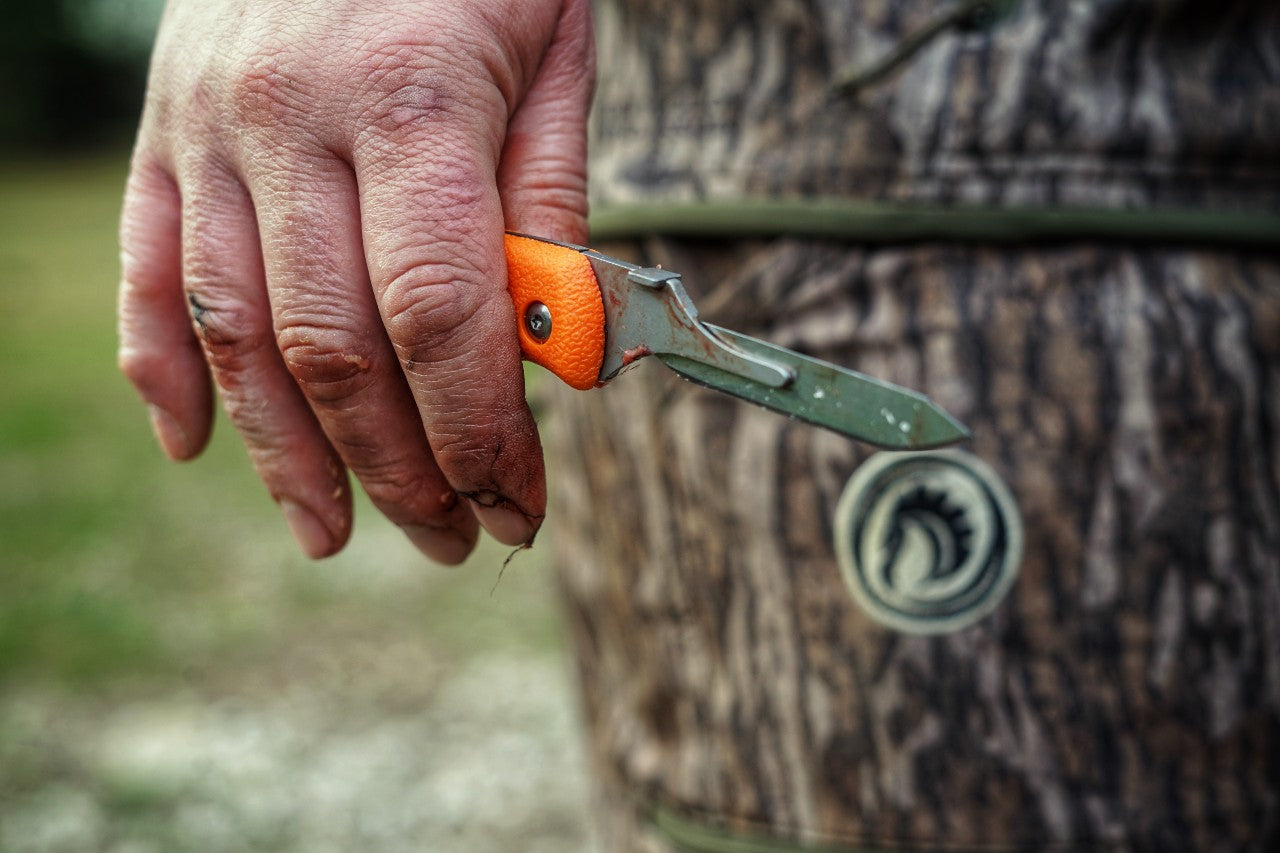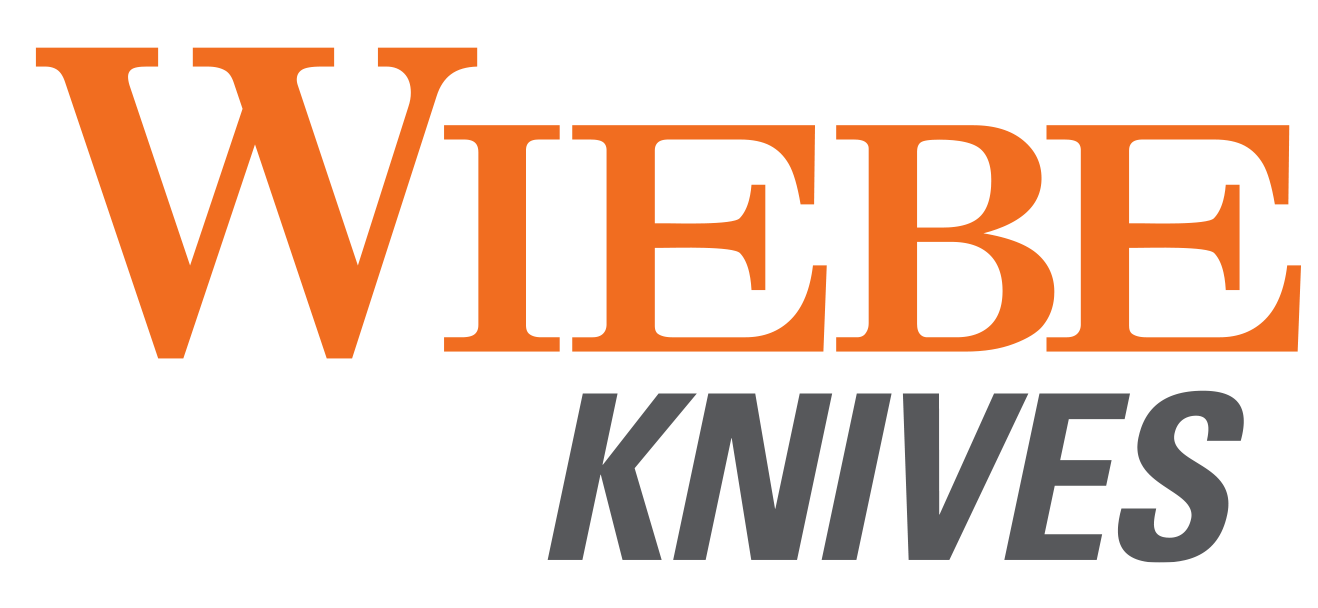
Aug 21 , 2025
How to Choose the Best Hunting Knife
Whether you’re heading out for a weekend deer hunt in the Midwest or planning an elk expedition out west, one tool every hunter needs is a reliable hunting knife. It’s essential not just for field dressing, skinning, and quartering—but also for any number of tasks in the field or camp. With so many blade styles and handle options on the market, knowing how to choose the best hunting knife can make the difference between a smooth harvest and a frustrating mess.
In this guide, we’ll break down the key features of a quality hunting knife, offer practical tips for selecting the right blade for different types of game, and showcase several trusted models from Wiebe Knives, including options with convenient replaceable blades.
Why Your Hunting Knife Matters
A hunting knife isn’t just another piece of gear—it’s an extension of your hand. It needs to be sharp, durable, easy to clean, and comfortable to use for long periods. A high-quality knife helps ensure a clean harvest and preserves more meat, while a dull or bulky one can lead to ruined cuts, unnecessary waste, or even injury.
For hunters who process their own game, investing in the right knife or knife set is a game-changer.
Key Features to Look For in a Hunting Knife
1. Blade Type
There are two main types of hunting knives: fixed blade and folding blade.
-
Fixed blade knives are strong, reliable, and easy to clean—ideal for larger game and rugged use. They’re preferred by hunters who prioritize strength over portability.
-
Folding knives offer convenience and are easier to carry, making them ideal for hunters on the go or those harvesting small to mid-size game.
Wiebe Knives offers both options, including ultra-sharp replaceable blade models that combine the best of both worlds.
2. Blade Shape
-
Drop point blades are a favorite for field dressing. They have a thick, curved shape that offers strength and control.
-
Clip point blades are narrower and offer precision, great for skinning or detailed cutting.
-
Skinning blades have a sweeping curve designed to glide through hide without puncturing organs.
Choosing the right shape depends on your game and personal preferences. Some hunters carry two or more knives to cover different tasks.
3. Blade Material
Durable, corrosion-resistant materials like high-carbon stainless steel are ideal for hunting knives. They hold an edge well and are easier to maintain. Wiebe Knives are known for high-quality blades that sharpen easily or come with replaceable blades—a huge advantage in the field.
4. Replaceable Blade Systems
For many hunters, a knife with a replaceable blade is a must. No need to carry sharpeners or worry about dulling your edge halfway through the job. Simply swap the blade and keep going.
Wiebe Knives offers several top-performing models with replaceable surgical-grade blades that are razor-sharp, including the Wiebe Vixen, Wiebe Monarch, and Wiebe Arctic Fox.
5. Handle Grip and Comfort
Look for a handle that offers a secure, non-slip grip—even when wet. Comfort matters, especially when you're field dressing or quartering in cold or rainy weather. Wiebe handles are ergonomically designed for long sessions in the field, whether you prefer a textured hard plastic or a soft handle.
Choosing a Hunting Knife by Game Size
For Small Game (Rabbits, Squirrels, Birds):
-
A compact folding knife or a light fixed blade works well.
-
Precision matters more than brute strength.
-
The Wiebe Red Fox Skinning Knife is an excellent compact option with a replaceable blade and rugged nylon sheath.
For Medium Game (Deer, Antelope):
-
A mid-sized fixed blade or folding knife with good control is ideal.
-
Skinning, gutting, and quartering efficiency matters.
-
The large Wiebe Tala Knife (with a longer 4” blade) and Wiebe Monarch Skinning Knife (lightweight and more compact) are purpose-built for hunters, especially deer hunters.
For Large Game (Elk, Moose, Bear):
-
Choose a strong, fixed-blade knife or a replaceable-blade model that can handle extended work.
-
Durability and edge retention are key.
-
The Wiebe Big Game Processing Kit has everything you need for big game processing, including a large gut hook skinning knife, a T-handle saw and skinner, and a sharp caping knife for detailed work.
Why Hunters Choose Wiebe Knives
Wiebe Knives are built by hunters, for hunters. Our entire lineup is designed around field performance, from skinning and gutting to boning and quartering. Here’s what sets Wiebe apart:
-
Replaceable Blades: No need to sharpen—just swap in a fresh one.
-
Ultra-Sharp Surgical Steel: Keeps its edge and cuts clean every time.
-
Purpose-Built Designs: Whether you’re working on a whitetail or a wild hog, there’s a knife tailored for the task.
-
Trusted by Trappers and Outfitters: These knives are tough-tested in the field season after season.
Bonus Tip: Carry More Than One Knife
No single knife does it all. Serious hunters often carry two or three knives for various stages of the game processing workflow—such as a field dressing knife, a skinning knife, and a boning knife. Or, combine tools with a comprehensive kit like the Wiebe Big Game Processing Kit, which includes multiple fixed-blade knives in one pack-ready pouch.
Final Thoughts: The Right Knife Makes the Hunt
Choosing the best hunting knife comes down to your target game, your hunting style, and personal preference. Consider what tasks you'll use it for most—field dressing, skinning, deboning—and pick a knife (or set) that gives you the sharpness, durability, and comfort you need to do the job right.
If you’re ready to gear up for hunting season, check out the full lineup of Wiebe hunting knives.
From replaceable-blade knives to purpose-built fixed blades, Wiebe Knives has a tool for every hunter—from the whitetail woods of the Midwest to backcountry adventures across the globe.
